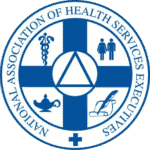All the signs point to an impending shortage of clinical providers in the coming years. The Association of American Medical Colleges (AAMC) says we will experience a shortage of doctors ranging from 46,900 to 121,900 by the year 2032. What are the trends leading us to this serious shortfall of physician talent? Here’s what you need to know.
1. What Will the Shortage Look Like?
According to the latest AAMC numbers, primary care and specialty care will lack the volume of providers necessary to keep up with demand. The shortages are predicted to look like this:
- Primary care will run 1,900 to 12,100 FTEs short.
- Specialty fields will experience a shortfall of between 24,800 and 65,800.
- Among specialists, we will need between 14,300 and 23,400 more surgeons than will be available.
- Other specialty areas, from neurology, pathology, radiology, and more, will fall behind by 20,600 to 39,100.
The only saving grace behind these concerning numbers is that the AAMC also reports the supply of midlevels, including physician assistants (PAs) and advanced practice registered nurses (APRNs), is projected to increase.
However, the AAMC is quick to point out, “The United States would need an additional 95,900 doctors immediately if health care use patterns were equalized across race, insurance coverage, and geographic location.”
2. What’s Behind the Shortage?
The primary problem causing the severe physician shortage is a U.S. population that is growing and also aging. The population is predicted to grow more than 10% by 2032. The baby boomer population, which until recently was the largest population cohort in the nation, is now aging. The AAMC says those over age 65 will increase by nearly 50% by 2032. The problem is exacerbated because physicians are aging right along with their patients. When baby boomer doctors finally decide to retire, it will put additional pressure on the system.
Additional factors affecting the projected shortage include government limits on residency programs that many believe should be increased. Merritt Hawkins points out that these caps have not kept pace with population increases in the last 20 years. They also haven’t kept pace with a 30% increase in medical school enrollment. Consequently, there is a growing number of medical school graduates unable to match to residency programs.
Ironically, Americans are living longer, but have a higher rate of lifestyle-related chronic diseases such as obesity and diabetes. The Robert Wood Johnson Foundation says the number of U.S. residents with chronic conditions in 2030 is expected to be 37% higher than in 2000 – that’s 46 million people that need care.
3. Who Will Be Most Affected?
The need for more doctors will be felt in longer wait times for clinical care, even for critical health issues. But these shortages will vary by state and region.
Becker’s Hospital Review reports on five states that appear to be facing the highest volume of physician shortages. They include:
- Arkansas
- Mississippi
- Montana
- Oklahoma
- Wyoming
Rural communities will feel the biggest pinch; many community hospitals have closed which makes the role that FQHC’s play in these regions increasingly important.
UHC Solutions works to provide clinical talent to FQHC’s serving our nation’s rural communities. If you’re ready to help make a difference, contact our leading FQHC recruiting specialists today.





